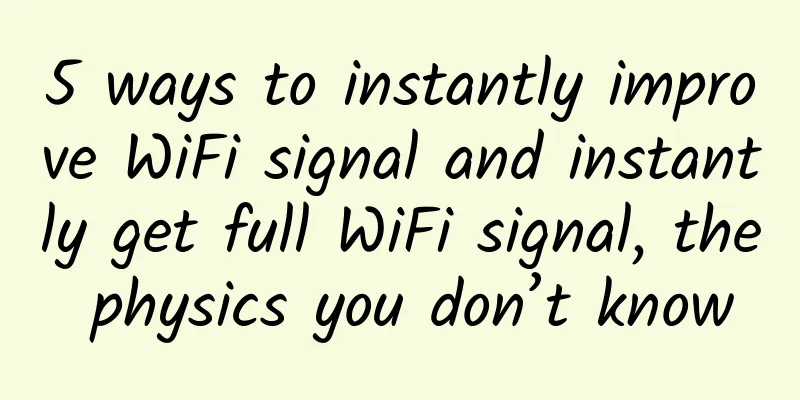Discussion on 5G network construction plan

Labs SummaryThis paper proposes a 5G network architecture and summarizes the 2.6GHz band 5G network construction plan based on actual network construction scenarios. At the same time, it analyzes the 2.6GHz band 4G/5G collaborative networking and puts forward relevant suggestions for 4G/5G collaborative networking. The booming development of mobile Internet has placed higher and higher requirements on the bandwidth, latency and capacity of mobile networks. The existing 4G network cannot meet the needs of mobile Internet applications. 5G network has the characteristics of ultra-high speed, ultra-large connection and ultra-low latency, which are the most significant improvements of 5G communication compared with 4G communication. With the issuance of 5G operating licenses, the pace of operators' 5G network construction has accelerated. It is of great significance to explore how to build a 2.6GHz frequency band 5G network based on the existing 2G/4G network and the 4G/5G collaborative networking solution. 1. 5G network construction plan1.1 5G C-RAN Network Architecture The 5G C-RAN networking architecture refers to the concentration of all 5G BBUs in the integrated access room, with only 5G AAUs left on the base station side. Compared with the traditional 4G C-RAN wireless network, the 5G C-RAN network still has the four characteristics of centralization, collaboration, wireless cloudification, and green energy saving. Considering the construction and operation costs and the long-term wireless network evolution, it is recommended that the C-RAN networking architecture be adopted for 5G network construction. The comparison between the 5G C-RAN networking architecture and the distributed deployment networking architecture is shown in Figure 1. 1.2 BBU Construction Plan By deploying 4G/5G shared BBU, repeated BBU investment can be reduced and operating costs can be lowered. Taking a certain manufacturer's equipment as an example, there are two BBU deployment solutions, as shown in Figure 2.
1.3 Fronthaul Technology Solution Fronthaul refers to the information transmission between 5G AAU and BBU. There are three 5G AAU fronthaul solutions: fiber direct fronthaul, color optical module fronthaul, and active wavelength division fronthaul. The technical comparison of the three fronthaul solutions is shown in Table 1. 5G sites have centralized BBUs, which places a huge demand on the fiber cores of fronthaul optical fibers. It is urgent to use fiber core multiplexing to reduce the demand for fronthaul fiber cores. Currently, there are three solutions: single-fiber bidirectional optical modules, color optical plus passive wavelength division, and active wavelength division. Comparing the advantages and disadvantages of each solution, the color optical plus passive wavelength division solution is the best in terms of fiber core utilization efficiency and single-site cost. As shown in Figure 3, the 6-wave single-fiber color optical module solution can significantly reduce the original 6-core fronthaul fiber cores to 1 core. 1.4 5G Supporting Transformation Plan To meet the requirements of 5G construction, corresponding supporting modifications to the roof and power supply are needed. The 5G supporting modification plan is introduced in two parts below. 1.4.1 Antenna configuration modification plan Since the tower rental fee increases significantly when adding poles, in order to reduce the operating costs of base stations, the principle of 5G base station construction is not to add new poles to the antenna surface. Considering the size and weight of 5G AAU, it is recommended that 5G AAU be installed using an independent pole. According to the different scenarios of actual 2.6GHz frequency band 5G network construction, the 5G antenna surface configuration modification plan is as follows: 1.4.1.1 Independent antenna with D-band As shown in Figure 4, if the 4G network has a narrowband 8T8R D-band or 3D-MIMO independent antenna, and 5G and 4G share the same manufacturer, and the antenna load meets the requirements, the narrowband 8T8R D-band or 3D-MIMO independent antenna should be replaced with a 4G/5G common-mode AAU. The 4G/5G common-mode AAU supports the simultaneous opening of 5G and 4G 3D-MIMO with larger capacity. 1.4.1.2 No additional space for poles, but multiple antennas in the same sector direction As shown in Figure 5, if the 4G network does not have narrowband 8T8R D-band or 3D-MIMO independent antennas, but has two or more antennas, the existing antennas can be integrated using a more centralized 4/4/8/8 antenna, and the 5G AAU can be installed on the modified redundant pole. 1.4.1.3 Beautify the outer cover scene 5G modification of beautification cover scene generally requires modification of beautification cover or addition of beautification cover. Beautification cover scene accounts for a large proportion, and old beautification cover generally has no heat dissipation design. Since 5G AAU is an active device, the original beautification cover needs to be heat-dissipated, otherwise it is easy to cause AAU equipment high temperature alarm. The 5G beautification cover solution is shown in Figure 6. The height of the beautification cover is recommended to be no less than 2000mm, and maintenance doors are opened on the back and right side (maintenance cavity side). The width of the maintenance door is recommended to be no less than 500mm; heat dissipation windows are opened at the bottom and top of the four sides, and the window size is recommended to be no less than 500mm*200mm; the mechanical downward tilt angle is supported to be no more than 10°; the pole position is required to be adjustable left and right, and the distance between the pole center and the back of the beautification cover is recommended to be 200mm. If there is no heat dissipation window, there must be a bottom air inlet, and the height of the rear maintenance door top must be more than 200mm greater than the top of the AAU. It is recommended that the material of the beautification cover be fiberglass, and metal materials or metal support frames are prohibited.
1.4.1.4 There is space for a pole or a new pole For scenarios that do not fall into the above categories, it is not possible to free up a 5G pole position through integration and transformation. If there is a spare pole or space for a new pole on the roof, the spare pole or the new pole can be used to install a 5G AAU. 1.4.2 Power supply transformation plan 1.4.2.1 City power transformation plan Taking the equipment of a certain manufacturer as an example, the maximum rated power consumption of three 5G AAUs reaches 3.9kW. The actual power consumption of three 5G AAUs at full load is about 3.3kW. The mains capacity requirement after adding 5G equipment can be calculated by formula (1). Mains capacity is an important factor affecting the opening of 5G base stations. It is necessary to conduct a survey and calculation of mains demand in advance and expand mains capacity in a timely manner to prepare conditions for the smooth opening of 5G base stations. Since 5G and 4G D-band 3D-MIMO have been opened in common mode at the same time after the opening of the 2.6GHz band 5G base station, the original ordinary narrowband 8T8R D-band RRU will be shut down and dismantled. Therefore, when calculating the mains capacity requirement, pay attention to deducting the power consumption capacity of the replaced ordinary narrowband 8T8R D-band RRU. Wherein, η is the conversion efficiency of the rectifier module. When the rectifier module is a general efficiency module, η is 0.85. When the rectifier module is a high efficiency module, η is 0.95. 1.4.2.2 DC power distribution transformation plan
2. 4G/5G collaborative networking solution2.1 5G frequency configuration and power allocation solutions for different scenarios According to relevant test verification, the single-carrier capacity of 4G 3D-MIMO is about twice that of ordinary 8T8R D-band carrier. In order to meet the business needs of 4G traffic hotspots, it is necessary to consider 4G/5G collaborative networking. When 5G base stations are opened, 4G 3D-MIMO with stronger carrying capacity is opened in common mode in reverse. In the early stage of 5G network construction, 5G base station construction can be carried out around 4G traffic hotspots. For 2.6GHz band 5G AAU equipment, it can support the simultaneous opening of 1 5G carrier and 3 4G 3D-MIMO carriers. 2.6G band 5G equipment supports 4G/5G dual-mode and bandwidth supports 160MHz. For 320W 5G equipment, 40W power is configured for every 20MHz bandwidth; for 240W 5G equipment, when 4G/5G 1:1 co-location is constructed, it is necessary to ensure that both 4G/5G networks can achieve continuous coverage, and the total power of AAU is insufficient. For two typical scenarios, 5G service demand area and 4G traffic hotspot area, the recommended 4G/5G frequency configuration and power allocation scheme are as follows: 2.1.1 5G service demand areas
2.1.2 4G traffic hotspots
2.2 4G/5G collaborative networking interference analysis For the 160MHz 2.6G frequency band, in areas where 5G is not built, 4G occupies 60MHz from 2575 to 2635MHz; in areas where 5G NR is continuously turned on, 5G NR occupies 100MHz from 2515 to 2615MHz. 4G and 5G have 40MHz of spectrum overlap, which will cause interference. In principle, the interference of 5G to 4G is less than that of 4G to 5G. For broadcast signals, 4G continuously transmits in a wide beam, while 5G supports up to 8 narrow beams for polling transmission. The 5G broadcast signal transmission mechanism can randomize interference. For pilot reference signals, the 4G network cell reference signal is continuously transmitted, while the 5G network has no cell reference signal and is only transmitted when there is user scheduling, which greatly reduces co-channel interference. For data subcarriers, the transmission mechanism of 4G and 5G is consistent, and data is only sent when there is data transmission. The simulation results of actual network parameters are consistent with the above theoretical analysis conclusions. In a certain city, there are more than 30 5G base stations in continuous networking, and the 5G base stations are configured with 100 MHz bandwidth. An 800m isolation zone is set between the 5G base station continuous networking area and the peripheral 4G base station coverage area, and the average load of the peripheral 4G network during busy hours is 30%. Based on the simulation of network parameters, the interference impact is as follows:
In general, due to the interference of 4G/5G collaborative networking, the average 5G downlink rate dropped by less than 5%, and the average 4G downlink rate dropped by less than 4%. The 4G/5G collaborative networking interference has little impact on the 4G/5G network performance. Therefore, it is recommended to set up isolation belts in the 5G network performance demonstration area to show the best 5G network performance; when 5G is deployed commercially on a large scale, there is no need to set up isolation belts. 3. ConclusionThis article proposes a 5G network architecture and summarizes the BBU construction plan, fronthaul plan, antenna configuration modification plan and power supply modification plan in the 2.6GHz band 5G network construction. At the same time, this article also analyzes the 4G/5G collaborative networking plan that will exist for a long time in the 5G network construction process and proposes corresponding solutions. The 5G network construction plan summarized in this article is believed to be of great reference significance for actual network construction. [This article is an original article by 51CTO columnist "Mobile Labs". Please contact the original author for reprinting.] Click here to read more articles by this author |
<<: Application of Passive WDM Technology in 5G Fronthaul
>>: How service mesh enables microservices networking
Recommend
Network Engineer vs. Network Administrator: What's the Difference?
Network engineers and network administrators are ...
5G+Cloud+AI: Huawei and operators work together to build new ICT infrastructure, unleash the benefits of 5G, and enable a wide range of industries
[Shenzhen, China, July 30, 2020] Today, at the Cl...
Monaco becomes the first country to have full 5G coverage, supported by Huawei technology
According to foreign media reports, on July 9 loc...
Bacloud: 15% off KVM VPS, 25% off dedicated servers, 10TB hard drive server starting at $28.96/month
Bacloud is a Lithuanian hosting company founded i...
Network Performance Monitoring and Diagnostics Market Guide (2020 Edition)
With the acceleration of cloud migration and the ...
10 pain points: How IT departments face edge computing
From networking and integration to failover, asse...
GSMA Liu Hong: Who will build the 5G private network? Let the operators do it
[[383535]] 5G has the characteristics of high spe...
Investigating the environmental and social impacts of 5G technology
The emergence of 5G technology has the potential ...
Ele.me Cheng Yanling: Share the correct way to open the era of multi-active operation and maintenance of the whole site
[51CTO.com original article] On December 1-2, 201...
5G development enters its fourth year, and innovation is the key to development
On June 6, 2019, the Ministry of Industry and Inf...
F5 Greater China Chief Technology Officer Wu Jingtao: Probeless real-time application big data collection engine implementation and AIOps realization
[51CTO.com original article] Recently, the WOT201...
LOCVPS Los Angeles CN2 line KVM is online, Los Angeles/Hong Kong Cloud/Hong Kong Confederation 30% off
LOCVPS has sent a new Los Angeles CN2 line host o...
Compiling 100 million lines of code in 7.5 minutes Huawei Software Development Cloud is a magical tool
The 2016 Huawei Dalian Software Development Cloud...
NGINX Sprint China 2022 Conference: Embracing open source to help modernize applications
Recently, the NGINX Sprint China 2022 conference ...









